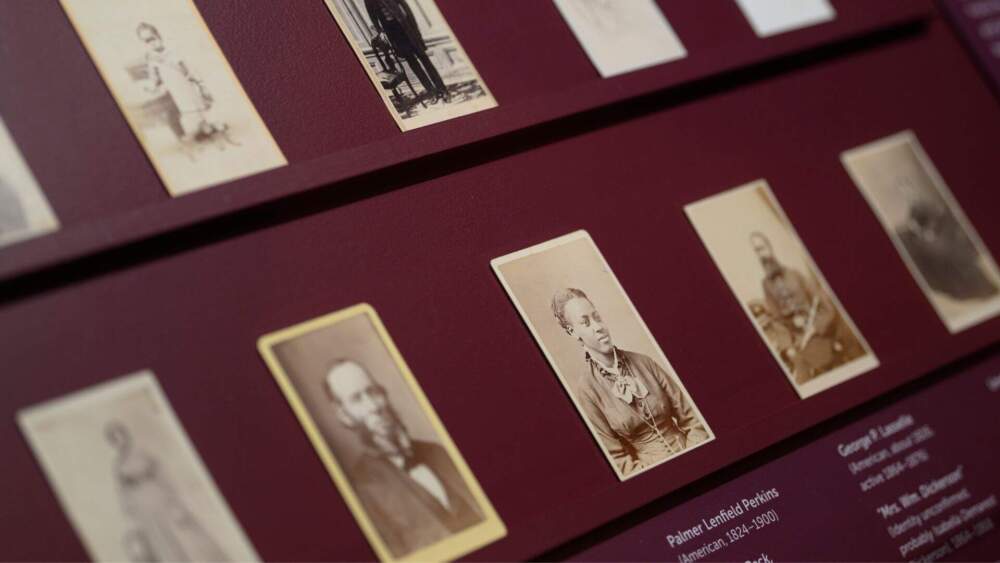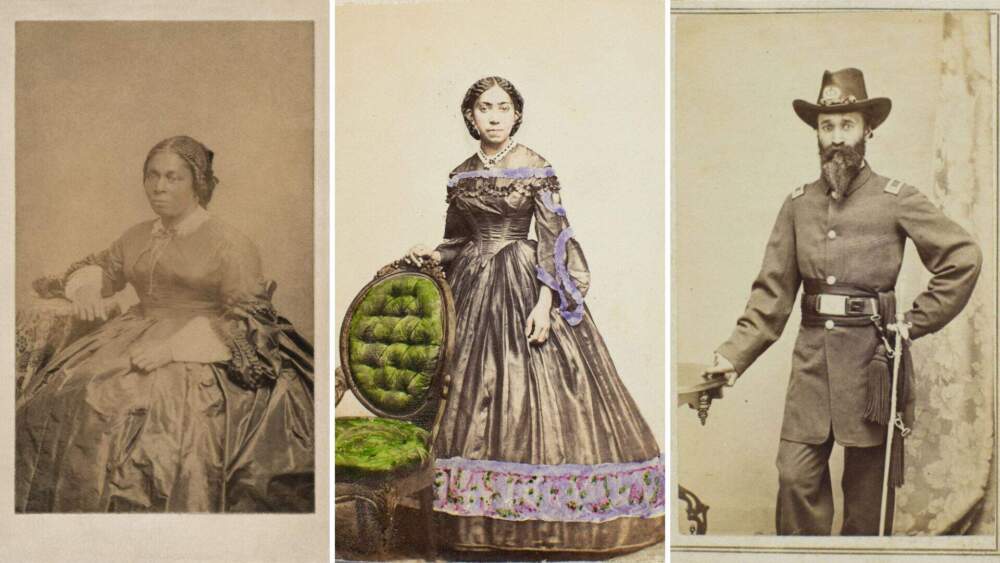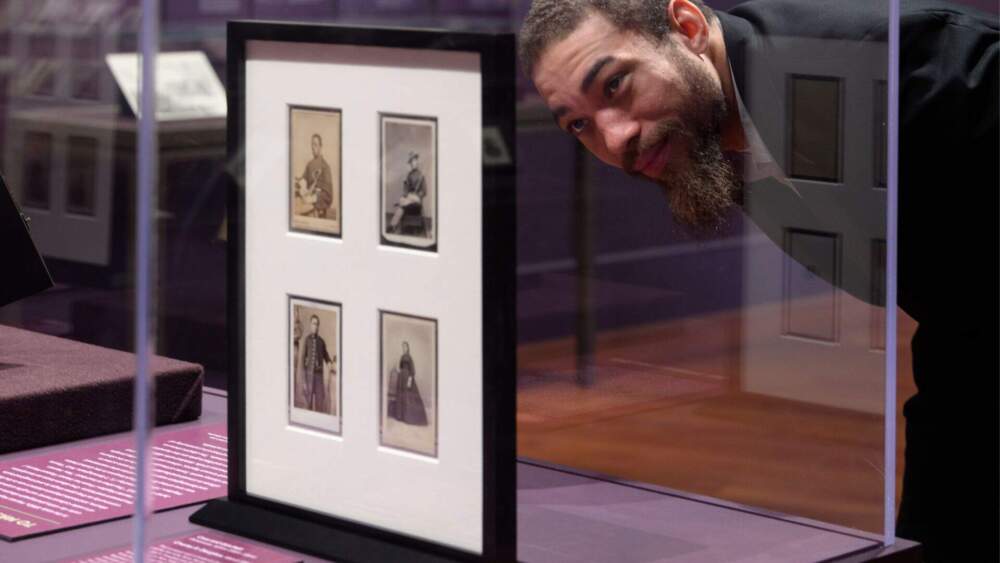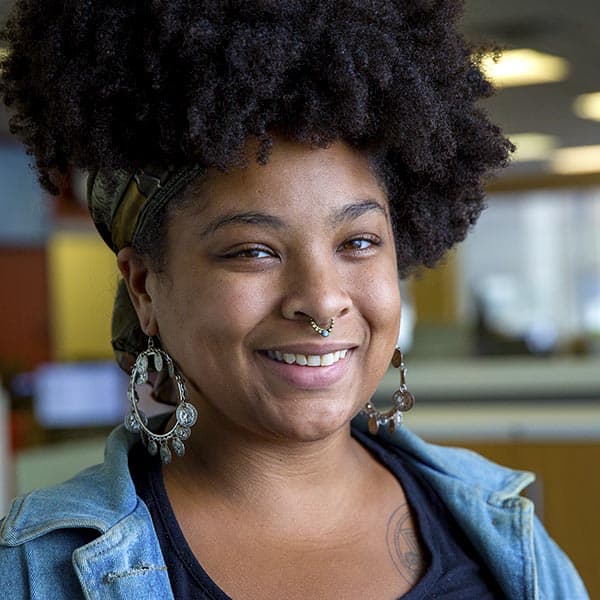Advertisement
Abolitionist Harriet Hayden's photo albums show 19th-century Black lives

For many Black people of the diaspora, the archive can be a place of intrigue and frustration. Racism, sexism and colonialism have historically dictated who has been documented and in what ways. There are gaps in how many traditional archives record Black life. Sometimes, with luck, something is uncovered that provides depth and nuance beyond a name on a page. "Framing Freedom: The Harriet Hayden Albums," on view at the Boston Athenaeum through June 22, does just that.
"Black history is often a part of the urban fabric, the nation's fabric, but we don't necessarily have evidence of those things," says Makeda Best, who co-curated the exhibit. Through "Framing Freedom," "we are able to visualize and materialize a sense of connection."
This is the first major exhibition featuring the contents of two 19th-century photo albums owned by Black activist Harriet Hayden. Harriet and her husband Lewis Hayden self-emancipated from slavery in 1844 with their son Joseph and eventually made their way to Boston, where they settled in the then predominantly Black Beacon Hill neighborhood by 1849.

The Haydens were deeply involved in anti-slavery work. Their home at 66 Phillips St. served as a boarding house and a stop on the Underground Railroad, an important place for those fleeing enslavement, especially after the Fugitive Slave Act of 1850. It's estimated that one-fourth of freedom seekers traveling through Boston passed through the Hayden's home.
In addition to the albums, the exhibit utilizes 19th-century artifacts and documents to contextualize Harriet's life and the anti-slavery movement in Boston and beyond.
"We've created this world in which you see Lewis, you see Harriet, you see their community, and you also see the world that they strove for, the hope that they had," says Best.
It's a rare opportunity to see the light-sensitive photos in the albums. The images will likely need to be stored after the exhibit closes. The albums, which were originally gifted to Harriet, contain 87 cartes-de-visites, or small portraits that were once used in a similar fashion as calling cards. Their invention in 1854 made photos more accessible and people would trade their carte-de-visites with each other.
"For the first time, it's possible for people of ordinary means to have a collection of the faces of their friends," says John Buchtel, curator of rare books and head of special collections at the Boston Athenaeum. "They're just jumping on it, taking advantage of it, and using it to celebrate their community and to reinforce social ties."

Many of the photos Harriet collected and put into the albums were of people in the Hayden's network, including other Black activists and allies such as Virginia Hewlett Douglass (the daughter-in-law of Frederick Douglass), poet and suffragist Frances Harper and Dr. John V. DeGrasse, the first Black man in the country to get a formal education as a doctor.
"They are Harriet's photographs. They are Harriet's work to contain that network, to picture that network, to keep that network together," Best notes. "And in each of those pictures is a history. And we try in the exhibition to give you a sense of who those people are."
For people like the Haydens, who were once enslaved, being able to document themselves and have documentation of others was an inherently radical act. Choosing an outfit, the pose and even the photographer meant having autonomy over how someone was represented, Buchtel says, a privilege too often denied to Black people in America. Though they weren't included in the albums, the exhibit features the only two known photographs of Harriet.
Best emphasizes that the domestic work Harriet did in the home, including taking care of tenants, hosting dinners with changemakers and leading local literacy groups, made the Hayden's abolition movement work possible. Harriet's labor left an indelible impact on the community around her.
Though often overlooked and underappreciated, "caregiving is movement work and it becomes a way to connect and to honor the work of women today," says Best. "So when you look at the albums, you see all these women, you understand that they're also doing care work."
"Framing Freedom" shines a light on this caregiving work. Even collecting cartes-de-visites for her albums falls into this form of activism: She took the time to lovingly amass the photos and place them in the albums. She was doing the work of an archivist by collecting documentation of the everyday people who make social movements possible.

"She's making a history of a movement in her own way," Best says. "Somebody needs to create history. Somebody needs to inspire other people. And that's what the albums did."
Even in death, Hayden was committed to uplifting Black people and left the entirety of her estate of around $5,000 (now valued at around $172,000) to endow a scholarship at Harvard University for Black medical students, which persists to this day. Buchtel and Best say current students who were awarded that scholarship visited the opening of "Framing Freedom" and were "quite amazed to see the evidence of this woman who allowed them to have this opportunity to attend Harvard Medical School."
The exhibition of Hayden's albums, over 130 years after her death, underscores her enduring legacy and the importance of caregiving in activist movements.
"I hope that people see, in these albums and in Harriet's work, the tremendous power of everyday people in activist movements," Best says. "I hope that they recognize the unique role of women, of African American women in those movements."
Correction: An earlier version of this story misstated the name of Harriet Hayden's son. We regret the error.
This article was originally published on April 19, 2024.
